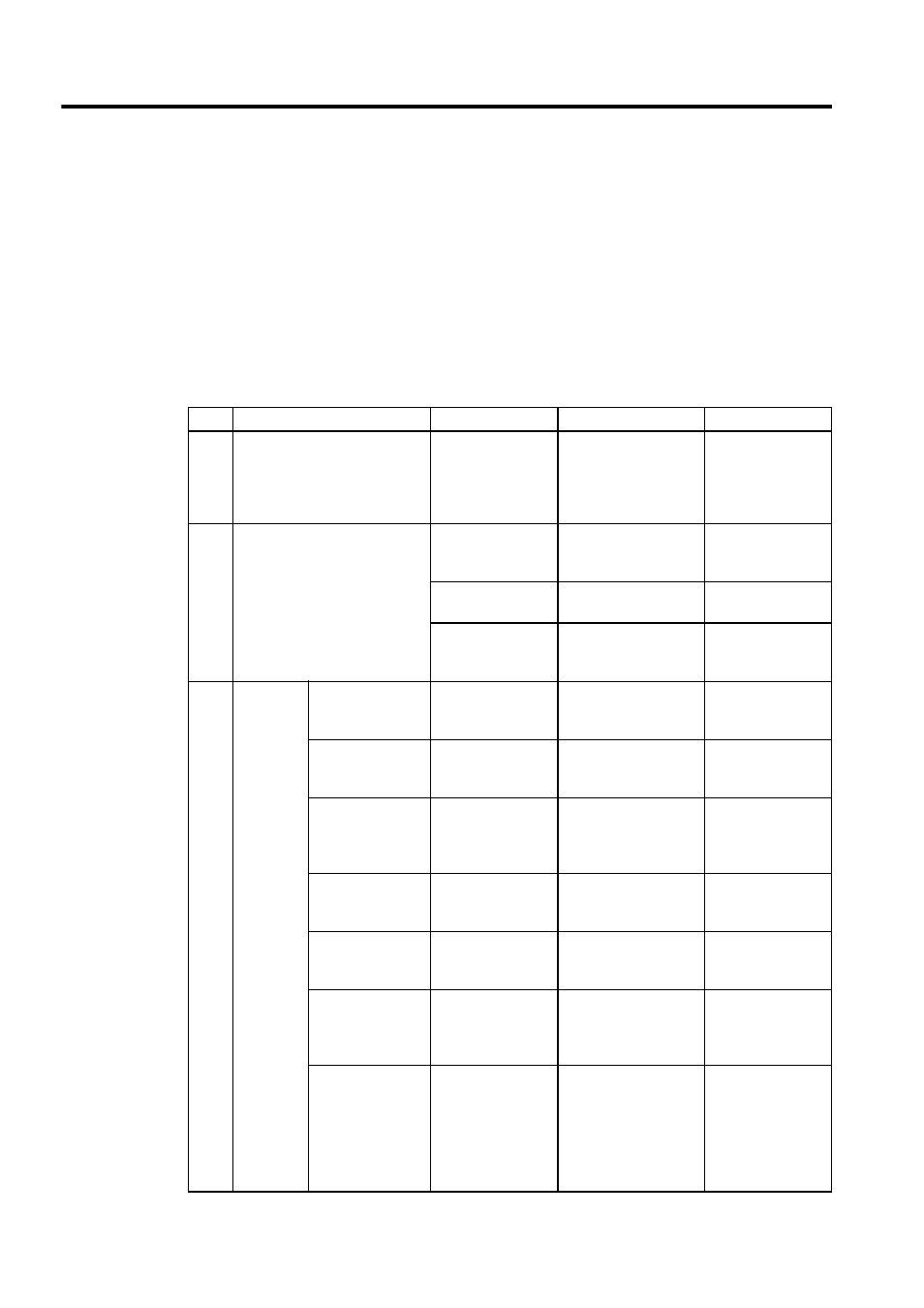1 inspection items, 1 daily inspections – Yaskawa MP920 User's Manual Design User Manual
Page 474

11 Maintenance and Inspection
11.1.1 Daily Inspections
11-2
11.1
Inspection Items
This section summarizes daily and regular inspection items that must be performed by the cus-
tomer.
11.1.1
Daily Inspections
The table below lists the daily inspection items.
Daily Inspection Items
No.
Inspection Item
Inspection Details
Criteria
Action
1
Installation conditions of Mod-
ule, etc.
Check the mount-
ing screws for
looseness. Check
whether the covers
are all in place.
The screws and covers
must be secured cor-
rectly.
Retighten the
screws.
2
Connection conditions
Check the terminal
screws for loose-
ness.
The screws must be
tight.
Retighten the
screws.
Check the connec-
tors for looseness.
The connectors must be
tight.
Retighten the con-
nector set screws.
Check the gap
between crimp ter-
minals.
There must be an
appropriate gap
between the terminals.
Correct as neces-
sary.
3
Indicators POWER indicator Check whether the
indicator is lit.
The indicator must be
lit. (It is abnormal if the
indicator is not lit.)
−
READY indicator
Check whether the
indicator is lit.
The indicator must be
lit. (It is abnormal if the
indicator is not lit.)
See Chapter12
Troubleshooting.
RUN indicator
Check whether the
indicator is lit while
the system is in
RUN state.
The indicator must be
lit. (It is abnormal if the
indicator is not lit.)
See Chapter12
Troubleshooting.
ERR indicator
Check whether the
indicator is not lit.
The indicator must be
not lit. (It is abnormal if
the indicator is lit.)
See Chapter12
Troubleshooting.
ALM indicator
Check whether the
indicator is not lit.
The indicator must be
not lit. (It is abnormal if
the indicator is lit.)
See Chapter12
Troubleshooting.
BAT indicator
Check whether the
indicator is not lit.
The indicator must be
not lit. (The battery
voltage is too low if the
indicator is lit.)
Replace the battery.
I/O indicators
Check whether the
indicator comes on
and goes off cor-
rectly.
The indicators must
come on when I/O is
ON, and go off when I/
O is OFF. It is abnor-
mal if a indicator does
not come on or go off
as above.
−
